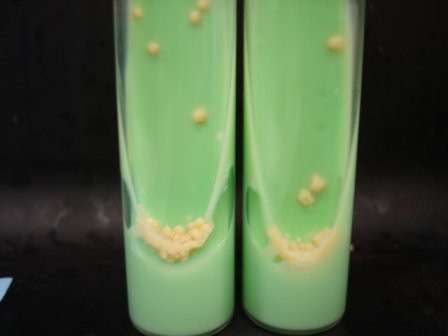Researchers develop new DNA sequencing method to diagnose tuberculosis

Researchers working in the UK and The Gambia, have developed a new approach to the diagnosis of tuberculosis (TB) that relies on direct sequencing of DNA extracted from sputum (a technique called metagenomics) to detect and characterize the bacteria that cause TB without the need for time-consuming culture of bacteria in the laboratory.
The research, reported today in the peer-reviewed journal PeerJ, was directed by Professor Mark Pallen, Professor of Microbial Genomics at Warwick Medical School and Dr Martin Antonio, head of the TB diagnostics laboratory at UK Medical Research Council (MRC) Unit in The Gambia.
"Laboratory diagnosis of TB using conventional approaches is a long drawn-out process, which takes weeks or months," says Pallen. "Plus, relying on laboratory culture means using techniques that date back to the 1880s! Metagenomics using the latest high-throughput sequencing technologies and some smart bioinformatics, allows us to detect and characterize the bacteria that cause TB in a matter of a day or two, without having to grow the bacteria, while also giving us key insights into their genome sequences and the lineages that they belong to."
In this study, Pallen and his team in Warwick, including first-year PhD student Emma Doughty and bioinformatician Dr Martin Sergeant, worked with African scientists Dr Martin Antonio and Dr Ifedayo Adetifa to develop and exploit novel sequencing and analytic approaches. Antonio, head of the TB diagnostics laboratory at the MRC Unit in The Gambia, said, "TB is still a big problem in Africa and across the world. It is exciting to be involved in the development of new diagnostic approaches for this deadly disease."
The team detected sequences from the TB bacteria in all eight sputum samples they investigated and were able to assign the bacteria to a known lineage in seven of the samples. Two samples were found to contain sequences from Mycobacterium africanum, a variety of the TB bacterium that is particular to West Africa.
Emma Doughty, first author on the paper says: "It has been a privilege to work in Africa. I am looking forward to returning to analyze many more samples and refine our techniques so that we can detect drug resistance directly from metagenomic sequences. The work so far makes a great start to my PhD!"
Pallen and his co-workers have used shotgun metagenomics before to detect bacterial pathogens in contemporary and historical human material. Last year, his team used metagenomics to obtain an outbreak strain genome from stool samples from an E. coli outbreak and to recover TB genomes from ~200-year-old Hungarian mummies. Earlier this year, they recovered the genome of Brucella melitensis, which causes an infection called brucellosis in livestock and humans, from a 700-year-old skeleton from Sardinia, Italy.
The Pallen and Antonio teams aim to test the metagenomics technique on a wide range of samples. They hope that metagenomics will help detect mixed infections caused by more than one kind of bacterium. However, they stress that metagenomics is still some way from routine diagnostic use.
"We have provided proof-of-principle here, but we still need to make metagenomics more sensitive and improve our workflows. But, caveats aside, let's celebrate the fact that metagenomics stands ready to document past and present infections, shedding light on the emergence, evolution and spread of microbial pathogens!" Pallen says.
More information: Doughty EL, Sergeant MJ, Adetifa I, Antonio M, Pallen MJ. (2014) Culture-independent detection and characterisation of Mycobacterium tuberculosis and M. africanum in sputum samples using shotgun metagenomics on a benchtop sequencer. PeerJ 2:e585 dx.doi.org/10.7717/peerj.585

















